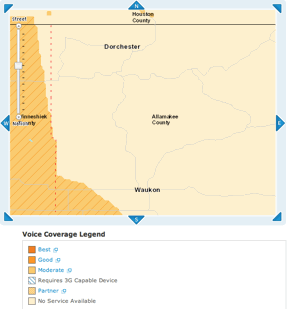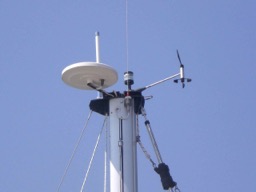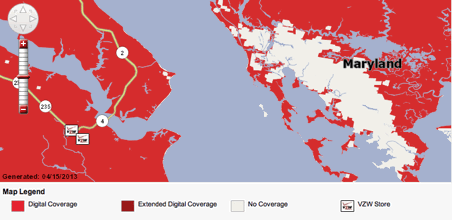CTIA and NAB's Battling Innovation Websites - I
The blood feud between CTIA and NAB is being expressed now in battling websites, each claiming how innovative their side is. From NAB we have WeAreBroadcasters.com/Innovating and from CTIA we have WirelessisLimitless.org. This is the first of a 2 blog series examining these claims. To be “fair and balanced”, as Fox News would say, we will deal with both sites. CTIA was randomly selected to be first. The following 2 videos are at the top of the CTIA site.

Agriculture is important to the economic fabric of Allamakee County and Iowa. Allamakee County’s 1,032 farms cover 274,844 acres of land, which accounts for 65 percent of the surface land in the county. Crop and livestock production are the visible parts of the agricultural economy, but many related businesses contribute as well by producing, processing and marketing farm and food products. These businesses generate income, employment and economic activity throughout the region.Allamakee County farmers harvested 60,364 acres of corn and 22,008 acres of soybeans, and produced 87,017 hogs and 55,246 head of cattle in 2007. Farms on average are smaller in Allamakee County, at 266 acres, than the statewide average of 311 acres. Sales per farm in Allamakee County were $127,524 in 2007.

Now is spectrum shortage the reason for this lack of cell coverage in these farming areas? A check of the FCC Spectrum Dashboard shows that VZW (dba Cellco Partnership) has licenses in : Fremont, Page, Taylor, Ringold, and Decatur counties in both 700 MHz and the 1700/2100 MHz band, while AT&T (dba AT&T Mobility Spectrum LLC) has licenses in the same 2 bands in Allamakee County where it has no service.
Another odd thing about the videos is the focus in the first one on Smartfield, Inc.’s SmartCrop field monitoring technology. Quite impressive. So we surfed over to the FCC’s equipment authorization site to learn more about this equipment. (Smartfield’s grantee code is “W9B” if you want to check.) Smartfield has 7 FCC equipment authorizations, all of which are for unlicensed Part 15 equipment, the type of thing that CTIA consistently opposes new spectrum for. The video claims that the SmartCrop system uses cellular paths for transmission of data from a central point in the field to Smartfield’s analysis service. So the SmartCrop system appears to be a hybrid unlicensed/cellular service - an inconvenient fact not mentioned in the video.
The second video focus on the wonders of John Deere’s high tech services for farmers. Remember John Deere? These are the people with the irresponsible GPS receiver front end design that covered the GPS band as well as the band above and below it even though it was public knowledge that LightSquared and its predecessors had been given authority to build base stations in the lower band years earlier. The Deere GPS design was easily overloaded by any nearby signal in the adjacent bands and thus was a major cause for the current interest in receiver standards. The CTIA membership did not want LightSquared to compete with them and probably encouraged the John Deere issue as the poster child in the anti-LightSquared campaign to garner political support from farm state members of Congress. So maybe this focus on John Deere could be payback for their anti-LightSquared help.
But if you are a farmer and want to use technology like Smartfield’s or John Deere’s, you really have to have cellular service and the main CTIA members don’t seem to be in a rush to use their existing spectrum to give it to you as they demand more spectrum.
As a sailboat owner, your blogger was impressed with the beauty of the photography in this CTIA video on the Wireless is Limitless site:
Your blogger’s cellular booster antenna
Carrier registration pending
(vertical white rod)

This video describes how the Chesapeake Bay Interpretive Buoy System uses cellular transmission to get real time data on water conditions to fishermen (actually called “watermen” in local parlance) and researchers. But then we recalled that the reason we have a “cellular booster” (fought against so long by the cellular industry in Docket 10-4 and the CTIA 2007 petition) on our boat is that cellular coverage on Chesapeake Bay has real problems. (A cellular industry spectrum specialist acquaintance who also sails - but will not be named here - uses Iridium to keep in touch from his boat.) Let’s look at VZW’s claimed coverage (AT&T’s and T-Mo’s are similar) on Central Chesapeake Bay, the area near Solomons, MD actually shown in the video:

Guess what FCC’s Spectrum Dashboard shows here? Yup, AT&T, T-Mo, and VZW all have multiple licenses in Dorchester County where the white blocks are on all their coverage maps. This is also not a mountainous area.
So whether it is farming in Iowa or maritime coverage on Chesapeake Bay, there are real cellular coverage problems that have nothing to do with spectrum presently available to the cellular industry. As shown above, in these nonmontainous areas there seems to be a lack of interest in the major cellular carriers to finish rolling out their networks. This is good for Iridium and other satellite carriers, but not really good for the public.
The cellular industry certainly needs more spectrum access to keep up with expanding uses that help our society and the economy. But these rural cases are good examples of why spectrum sharing is so important. The real spectrum shortage is in urban areas where civil demand is great and military use small - San Diego being a notable exception. But the demands of the industry for complete reallocations when they can’t even use all the spectrum they have today sound hollow. Why can’t all spectrum users work together to find mutually beneficial solutions to their spectrum problems that don’t depend on cheap Chinese-made equipment. Let’s cool the PR rhetoric and work on real problems.
The review of NAB’s site, also over the top, with be up in a few days.



![Validate my RSS feed [Valid RSS]](valid-rss-rogers.png)

